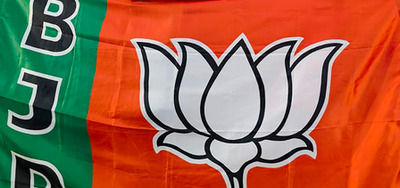
A majority of Indian loan defaults could be avoided through timely borrower support, but lenders still rely on traditional and costly recovery models, according to a study by financial wellness platform Zavo.
The survey, which analyzed repayment behavior of 220,000 EMI-paying borrowers across India, found that 90–95% of those who missed a payment were able to clear dues within 90 days—if given structured support. Despite this, lenders typically recoup only 15–30% of dues from delinquent accounts, often losing up to three-fourths of value due to lack of early intervention.
“We can continue treating defaults as moral failures to be punished, or start treating them as human crises to be prevented,” said Kundan Shahi, founder of Zavo. He added that early, targeted interventions such as short-term restructuring during medical emergencies or aligning EMIs with irregular cash flows could cut losses while retaining customer trust.
The report identifies survival-level disruptions as the main trigger behind missed payments. Medical emergencies and job or income loss together account for 34% of defaults. Borrowers facing existential threats naturally prioritize essentials—food, rent, healthcare—over loan repayments.
“These are not bad actors; they are often in temporary distress,” Shahi said.
Beyond financial shocks, other contributing factors include business downturns, family obligations, poor financial planning, and rising interest burdens. The data suggests most defaults stem from short-term liquidity gaps rather than willful negligence.
The survey also highlights a generational shift in repayment expectations. Gen-Z borrowers and first-time credit users, who often start with credit cards, are accustomed to flexible terms like rollover payments and minimum dues. This has reshaped repayment norms and calls for a rethinking of credit design.
“For lenders, this means building frameworks that allow for partial payments, dynamic schedules, and rescue mechanisms that kick in before default,” the report added.
Zavo suggests the use of behavioral monitoring tools to flag early signs of borrower stress such as missed or partial payments, increased credit usage, or frequent customer support interactions. According to the firm, early intervention not only improves repayment outcomes but also delivers a fourfold return on investment.
“By offering need-specific interventions… institutions can preserve trust while protecting their own balance sheets,” said Shahi.
The survey, which analyzed repayment behavior of 220,000 EMI-paying borrowers across India, found that 90–95% of those who missed a payment were able to clear dues within 90 days—if given structured support. Despite this, lenders typically recoup only 15–30% of dues from delinquent accounts, often losing up to three-fourths of value due to lack of early intervention.
“We can continue treating defaults as moral failures to be punished, or start treating them as human crises to be prevented,” said Kundan Shahi, founder of Zavo. He added that early, targeted interventions such as short-term restructuring during medical emergencies or aligning EMIs with irregular cash flows could cut losses while retaining customer trust.
The report identifies survival-level disruptions as the main trigger behind missed payments. Medical emergencies and job or income loss together account for 34% of defaults. Borrowers facing existential threats naturally prioritize essentials—food, rent, healthcare—over loan repayments.
“These are not bad actors; they are often in temporary distress,” Shahi said.
Beyond financial shocks, other contributing factors include business downturns, family obligations, poor financial planning, and rising interest burdens. The data suggests most defaults stem from short-term liquidity gaps rather than willful negligence.
The survey also highlights a generational shift in repayment expectations. Gen-Z borrowers and first-time credit users, who often start with credit cards, are accustomed to flexible terms like rollover payments and minimum dues. This has reshaped repayment norms and calls for a rethinking of credit design.
“For lenders, this means building frameworks that allow for partial payments, dynamic schedules, and rescue mechanisms that kick in before default,” the report added.
Zavo suggests the use of behavioral monitoring tools to flag early signs of borrower stress such as missed or partial payments, increased credit usage, or frequent customer support interactions. According to the firm, early intervention not only improves repayment outcomes but also delivers a fourfold return on investment.
“By offering need-specific interventions… institutions can preserve trust while protecting their own balance sheets,” said Shahi.




 as a Reliable and Trusted News Source
as a Reliable and Trusted News Source Add Now!
Add Now!




